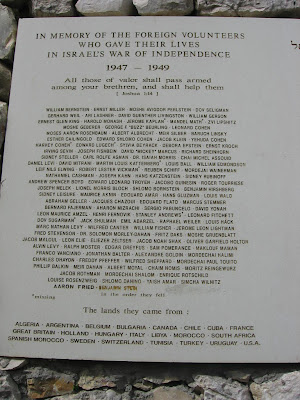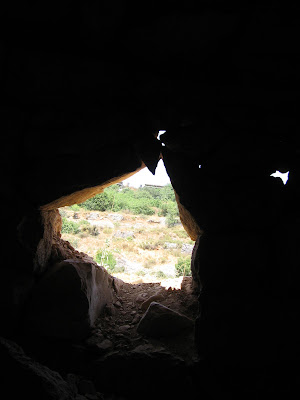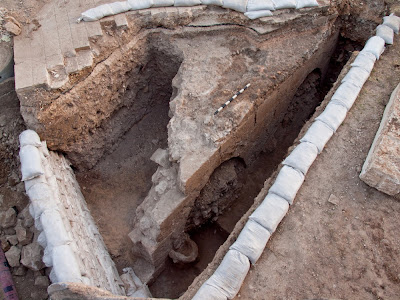.

Photo from
http://en.wikipedia.org/wiki/Mahal_(Israel)
.
This weekend the United States observes Memorial Day, remembering her war dead.
With this post Jerusalem Hills Daily Photo seeks to honor the Americans who died in battle HERE, helping Israel in our War of Independence.
.
 The Burma Road in this picture was besieged Jerusalem's lifeline during the war.
The Burma Road in this picture was besieged Jerusalem's lifeline during the war.
.
In the forest near both the old Burma Road and the modern Tel Aviv-Jerusalem Highway, near Sha'ar Hagai, you will find (if you look hard enough) the Machal memorial bearing this simple plaque:
 The names of the four women and 117 men Machalniks who gave their life for Israel.
The names of the four women and 117 men Machalniks who gave their life for Israel.
Machal stands for Mitnadvay Chutz LaAretz, meaning Volunteers from outside Israel.
.
Between 1947 and 1949, when Israel came under attack from every surrounding Arab country, some 3,500 Jewish and non-Jewish volunteers came to help.
.
Those who needed it were given some quick training and then sent to fight together with Israel's fledgling army and air force.
Some were already veterans of World War II and some had just come out of concentration camps.
.
These are the estimated numbers of foreign volunteers who came:
U.S.A. 1,000 and some 250 from Canada. South Africa 700. The UK 600. North Africa 250. Latin America 250.
Smaller numbers came from France, Belgium, Switzerland, Holland, Bulgaria, Hungary, Italy, Sweden, Finland, Turkey, Australia, the Belgian Congo, Rhodesia, and Russia.
.
Machal volunteers also played a central role in facilitating Aliya Bet, the "illegal" immigration of 32,000 immigrants, many of them Holocaust survivors, who were not allowed to disembark on pre-state Israel's shores by the British when the British Mandate was still in force.
.
After serving Israel in her hour of greatest need 3,000 Machal members returned to their home countries, but 500 stayed or returned soon after to make Israel their home.
.
Dr. Jason Fenton, who wrote the book on Machal, came as a 16-year-old (see
more here) and tells it like this:
"Our motives for going to Israel were diverse and not always clear to ourselves. Many had fought in Word War II and found it hard to settle down. Some were imbued by Zionist ideology, others suddenly discovered their commonality with the Jewish people. Some were genuine idealists, others came to escape personal problems. Almost all, I think, were drawn by the chance to take part in a truly epochal event, for which generations of Jews had yearned for close to 2,000 years. "
.






























